The Devil's Star Read online
Table of Contents
Cover
Copyright
About the Author
Also by Jo Nesbø
OSLO City Centre
The Devil’s Star
Part One
1. Friday. Egg.
2. Friday. Staff Leave.
3. Friday. The Awakening.
4. Friday. Statistics
5. Friday. Underwater.
6. Friday. Water.
7. Tuesday. Dismissal
Part Two
8. Tuesday and Wednesday. Chow Chow.
9. Wednesday. Missing Person.
10. Thursday and Friday. Nightmares.
11. Sunday. Departure.
12. Sunday. Bethlehem.
Part Three
13. Monday. Touch.
14. Monday. Barbara.
15. Monday. Vena Amoris.
16. Monday. Dialogue.
17. Tuesday. Profiles.
18. Tuesday. The Pentagram.
19. Wednesday. Under Water.
20. Wednesday. Cathedral Builders.
21. Thursday. Pygmalion
22. Thursday and Friday. The Revelation.
23. Friday. A Human Number
24. Friday. Otto Tangen.
25. Friday. Speaking In Tongues.
Part Four
26. Saturday. The Soul. The Day.
27. Saturday. Into Action.
28. Saturday. The Dildo.
29. Saturday. Drowning.
30. Saturday. The Arrest
31. Saturday. ‘Isn’t it wonderful to have someone to hate?’
Part Five
32. Sunday. The Swallows.
33. Sunday Night. Joseph’s Blessing.
34. Sunday Night. The Ultimatum.
35. Sunday Night. Fascinating Nonsense.
36. Monday. The Photograph.
37. Monday. Confession.
38. Monday. The Cloud.
39. Monday. Meetings.
40. Monday. Rain.
41. Monday. Happy Ending.
42. Monday. The Devil’s Star.
43. Monday Night. Rolex.
44. Monday Night. The Mumbling.
This eBook is copyright material and must not be copied, reproduced, transferred, distributed, leased, licensed or publicly performed or used in any way except as specifically permitted in writing by the publishers, as allowed under the terms and conditions under which it was purchased or as strictly permitted by applicable copyright law. Any unauthorised distribution or use of this text may be a direct infringement of the author’s and publisher’s rights and those responsible may be liable in law accordingly.
Version 1.0
Epub ISBN 9781409088370
www.randomhouse.co.uk
Published by Vintage 2006
2 4 6 8 10 9 7 5 3 1
Copyright © H. Aschehoug & Co (W. Nygaard) AS Oslo 2003
Translation copyright © Don Bartlett 2005
Jo Nesbø has asserted his right under the Copyright, Designs and Patents Act 1988 to be identified as the author of this work
Lyrics from ‘I Got a War’ by Gluecifer
Reprinted by permission of Universal Music Publishing, AB, Sweden
Lyrics from ‘Noen Å Hate’
Music and lyrics: Michael Krohn © Air Chrysalis Norway AS.
Printed with permission
This book is sold subject to the condition that it shall not, by way of trade or otherwise, be lent, resold, hired out, or otherwise circulated without The publisher’s prior consent in any form of binding or cover other than that in which it is published and without a similar condition including this condition being imposed on the subsequent purchaser
First published with the title Marekors by H. Aschehoug & Co
(W. Nygaard), Oslo
First published in Great Britain in 2004 by Harvill Secker
Vintage
Random House, 20 Vauxhall Bridge Road,
London SW1V 2SA
Random House Australia (Pty) Limited
20 Alfred Street, Milsons Point, Sydney,
New South Wales 2061, Australia
Random House New Zealand Limited
18 Poland Road, Glenfield,
Auckland 10, New Zealand
Random House (Pty) Limited,
Isle of Houghton, Corner of Boundary Road & Carse O’Gowrie,
Houghton 2198, South Africa
The Random House Group Limited Reg. No. 954009
www.randomhouse.co.uk/vintage
A CIP catalogue record for this book is available from the British Library
ISBN 9780099478539 (from Jan 2007)
ISBN 0099478536
Papers used by Random House are natural, recyclable products made from wood grown in sustainable forests. The manufacturing processes conform to the environmental regulations of the country of origin
Typeset in Sabon by
Palimpsest Book Production Limited, Polmont, Stirlingshire
Printed and bound in Great Britain by
TBC
About the Author
Jo Nesbø is the recipient of numerous awards in his native Norway. In addition to being Norway’s most successful crime writer, he is also a musician, songwriter and economist. He lives in Oslo.
ALSO BY JO NESBØ
The Redbreast
Part One
1
Friday. Egg.
The house was built in 1898 on a clay base that had since sunk a tiny bit on the west-facing side, causing water to cross the wooden threshold where the door was hung. It ran across the bedroom floor and left a wet streak over the oak parquet, moving west. The flow rested for a second in a dip before more water nudged it from behind and it scurried like a nervous rat towards the skirting board. There the water went in both directions; it searched and somehow sneaked under the skirting until it found a gap between the end of the wooden flooring and the wall. In the gap lay a fivekroner coin bearing a profile of King Olav’s head and the date: 1987, the year before it had fallen out of the carpenter’s pocket. But these were the boom years; a great many attic flats had needed to be built at the drop of a hat and the carpenter had not bothered to look for it.
It did not take the water much time to find a way through the floor under the parquet. Apart from when there was a leak in 1968 – the same year a new roof was built on the house – the wooden floorboards had lain there undisturbed, drying and contracting so that the crack between the two innermost pine floorboards was now almost half a centimetre. The water dripped onto the beam beneath the crack and continued westwards and into the exterior wall. There it seeped into the plaster and the mortar that had been mixed one hundred years before, also in midsummer, by Jacob Andersen, a master bricklayer and father of five. Andersen, like all bricklayers in Oslo at that time, mixed his own mortar and wall plaster. Not only did he have his own unique blend of lime, sand and water, he also had his own special ingredients: horsehair and pig’s blood. Jacob Andersen was of the opinion that the hair and the blood held the plaster together and gave it extra strength. It was not his idea, he told his head-shaking colleagues at the time, his Scottish father and grandfather had used the same ingredients from sheep. Even though he had renounced his Scottish surname and taken on a trade name he saw no reason to turn his back on six hundred years of heritage. Some of the bricklayers considered it immoral, some thought he was in league with the Devil, but most just laughed at him. Perhaps it was one of the latter who spread the story that was to take hold in the burgeoning town of Kristania.
A coachman from Grünerløkka had married his cousin from Värmland and together they moved into a one-room flat plus kitchen in one of the apartment blocks in Seilduksgata that Andersen had helped to build. The couple’s first child was unlucky eno
ugh to be born with dark, curly hair and brown eyes, and since the couple were blond with blue eyes – and the man was jealous by nature as well – late one night he tied his wife’s hands behind her, took her down to the cellar and bricked her in. Her screams were effectively muffled by the thick walls where she stood bound and squeezed between the two brick surfaces. The husband had perhaps thought that she would suffocate from lack of oxygen, but bricklayers do allow for ventilation. In the end, the poor woman attacked the wall with her bare teeth. And that might well have worked because as the Scottish bricklayer used blood and hair, thinking that he could save on the expensive lime in the cement mix, the result was a porous wall that crumbled under the attack from strong Värmland teeth. However, her hunger for life sadly led to her taking excessively large mouthfuls of mortar and brick. Ultimately she was unable to chew, swallow or spit and the sand, pebbles and chunks of clay blocked her windpipe. Her face turned blue, her heartbeat slowed and then she stopped breathing.
She was what most people would call dead.
According to the myth, however, the taste of pig’s blood had the effect of making the unfortunate woman believe she was still alive. And with that she immediately broke free of the ropes that bound her, passed through the wall and began to walk again. A few old people from Grünerløkka still remember the story from their childhood, about the woman with the pig’s head, walking around with a knife to cut off the heads of small children who were out late. She had to have the taste of blood in her mouth so that she didn’t vanish into thin air. At the time very few people knew the name of the bricklayer and Andersen worked tirelessly at making his special blend of mortar. Three years later, while working on the building where the water was now leaking he fell from the scaffolding – leaving only two hundred kroner and a guitar – and so it was to be another hundred years before bricklayers began to use artificial hair-like fibres in their cement mixes and before technicians at a laboratory in Milan discovered that the walls of Jericho had been strengthened with blood and camel hair.
Most of the water, however, did not run into the wall, but down it, because water, like cowardice and lust, always finds the lowest level. At first the water was absorbed by the lumpy, granular insulation between the joists, but more followed and soon the insulation was saturated. The water went right through it and soaked up a newspaper dated July 11, 1898, in which it said the building industry’s boom time had probably reached its peak and the unscrupulous property speculators were sure to have harder times ahead. On page three it said that the police still had no leads regarding the murder of a young nurse who had been found dead from stab wounds in a bathroom the previous week. In May, a girl mutilated and killed in a similar way was found near the River Akerselva, but the police would not say whether the two cases could be connected.
The water ran off the newspaper, between the wooden boards underneath and along the inside of the painted ceiling fabric of the room below. Since this had been damaged during the repair of the leak in 1968, the water seeped through the holes, forming drops that hung on until they became heavy enough for gravity to defy the surface tension; they let go and fell three metres and eight centimetres. There the water landed and terminated its trajectory. Into water.
Vibeke Knutsen sucked hard on her cigarette and blew smoke out of the open window on the fourth floor of the apartment building. It was a warm afternoon and the air rose from the sun-baked asphalt in the back yard, taking the smoke up the light blue house front until it dispersed. On the other side of the roof you could hear the sound of a car in the usually busy Ullevålsveien. But now everyone was on holiday and the town was almost deserted. A fly lay on its back on the windowsill with its six feet in the air. It hadn’t had the sense to get out of the heat. It was cooler at the other end of the flat facing Ullevålsveien, but Vibeke didn’t like the view from there. Our Saviour’s Cemetery. Crowded with famous people. Famous dead people. On the ground floor there was a shop selling ‘monuments’, as the sign said, in other words, headstones. What one might call ‘staying close to the market’.
Vibeke rested her forehead against the cool glass of the window.
She had been happy when the warm weather came, but her happiness had soon worn off. Even now she was longing for cooler nights and people in the streets. Today there had been five customers in the gallery before lunch and three after. She had smoked one and a half packets of cigarettes out of sheer boredom. Her heart was pounding and she had a sore throat; in fact, she could hardly speak when the boss rang and asked how things were going. All the same, no sooner had she arrived home and put the potatoes on than she felt the craving in the pit of her stomach again.
Vibeke had stopped smoking when she met Anders two years before. He hadn’t asked her to. Quite the contrary. When they met on Gran Canaria he had even bummed a cigarette off her. Just for a laugh. When they moved in together, just one month after getting back to Oslo, one of the first things he had said was that their relationship would probably be able to stand a little passive smoking, and that cancer researchers were undoubtedly exaggerating. With a little time he would probably get used to the smell of cigarettes on their clothes. The next morning she made up her mind. When, some days later, he mentioned over lunch that it was a long time since he had seen her with a cigarette in her hand, she answered that she had never really been much of a smoker. Anders smiled, leaned over the table and stroked her cheek.
‘Do you know what, Vibeke? That’s what I always thought.’
She could hear the pan bubbling behind her and looked at the cigarette. Three more drags. She took the first. It didn’t taste of anything.
She could barely remember when it was that she had started smoking again. Perhaps it was last year, around the time he had started staying away for long periods on business trips. Or was it over New Year when she had begun working overtime almost every evening? Was that because she was unhappy? Was she unhappy? They never rowed. They almost never made love either, but that was because Anders worked so hard, he had said, putting an end to any discussion. Not that she missed it particularly. When, once in a blue moon, they did make a half-hearted attempt at love-making it was as if he wasn’t really there. So she realised she didn’t really need to be there, either.
But they didn’t actually row. Anders didn’t like raised voices.
Vibeke looked at the clock: 5.15. What had happened to him? Generally he told her if he was going to be late. She stubbed out the cigarette, dropped it into the back yard and turned towards the stove to check the potatoes. She put a fork into the biggest one. Almost done. Some small black lumps bobbled up and down on the surface of the boiling water. Funny. Were they from the potatoes or the pan?
She was just trying to remember what she had last used the pan for when she heard the front door being opened. From the corridor she could hear someone gasping for breath and shoes being kicked off. Anders came into the kitchen and opened the fridge.
‘Well?’ he asked.
‘Rissoles.’
‘OK . . . ?’ His intonation rose at the end and formed a question mark. She knew roughly what it meant. Meat again? Shouldn’t we eat fish a little more often?
‘Fine,’ he said with flat intonation, leaning over the pan.
‘What have you been doing? You’re absolutely soaked with sweat.’
‘I didn’t do any training this evening, so I cycled up to Sognsvann and back again. What are the lumps in the water?’
‘I don’t know,’ Vibeke said. ‘I just noticed them.’
‘You don’t know? Didn’t you work as a sort of cook once upon a time?’
In one deft movement he took one of the lumps between his index finger and his thumb and put it in his mouth. She stared at the back of his head. At his thin brown hair that she had once thought was so attractive. Well groomed and just the right length. With a side parting. He had looked so smart. Like a man with a future. Enough future for two.
‘What does it taste of?’ she asked.
&
nbsp; ‘Nothing,’ he said, still bent over the cooker. ‘Egg.’
‘Egg? But I washed the pan . . .’
She suddenly paused.
He turned round. ‘What’s the matter?’
‘There’s . . . a drip.’ She pointed to his head.
He frowned and touched the back of his head. Then, in one movement, they both leaned backwards and stared up at the ceiling. There were two droplets hanging from the white ceiling fabric. Vibeke, who was a little short-sighted, wouldn’t have seen the drops if they had glistened. But they did not.
‘Looks like Camilla’s got a flood,’ Anders said. ‘If you go up and ring her bell, I’ll get hold of the caretaker.’
Vibeke peered up at the ceiling. And down at the lumps in the pan.

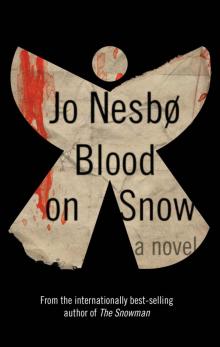 Blood on Snow: A novel
Blood on Snow: A novel Police: A Harry Hole thriller (Oslo Sequence 8)
Police: A Harry Hole thriller (Oslo Sequence 8) Doctor Proctor's Fart Powder: The Great Gold Robbery
Doctor Proctor's Fart Powder: The Great Gold Robbery Bubble in the Bathtub
Bubble in the Bathtub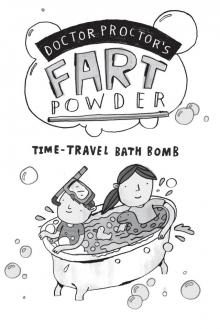 Doctor Proctor's Fart Powder: Time-Travel Bath Bomb
Doctor Proctor's Fart Powder: Time-Travel Bath Bomb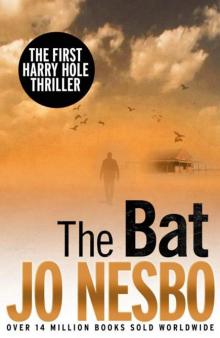 The Bat
The Bat Doctor Proctor's Fart Powder: The End of the World. Maybe.
Doctor Proctor's Fart Powder: The End of the World. Maybe.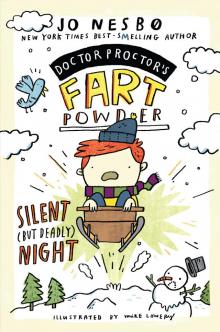 Silent (but Deadly) Night
Silent (but Deadly) Night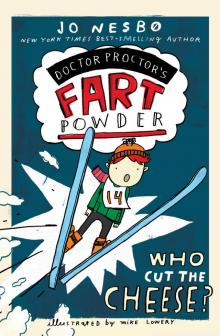 Who Cut the Cheese?
Who Cut the Cheese? Headhunters
Headhunters The Jealousy Man and Other Stories
The Jealousy Man and Other Stories Harry Hole Mysteries 3-Book Bundle
Harry Hole Mysteries 3-Book Bundle The Thirst
The Thirst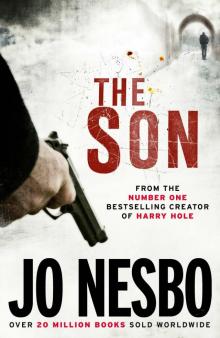 The Son
The Son The Redeemer
The Redeemer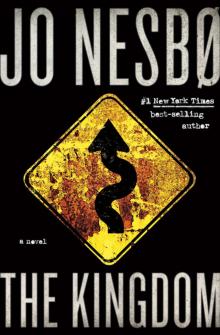 The Kingdom
The Kingdom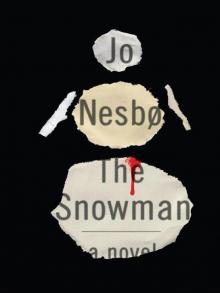 The Snowman
The Snowman The Redbreast
The Redbreast Phantom
Phantom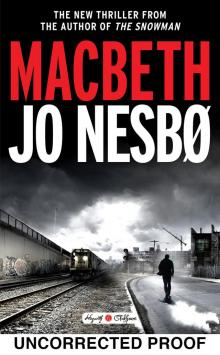 Macbeth
Macbeth The Leopard
The Leopard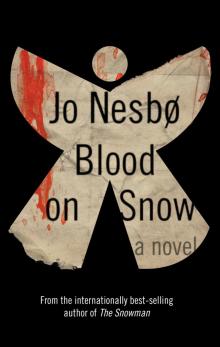 Blood on Snow
Blood on Snow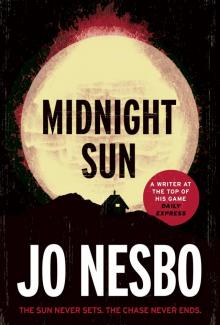 Midnight Sun
Midnight Sun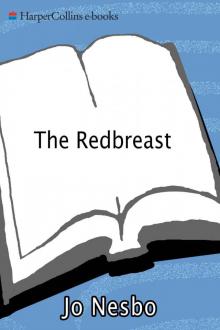 The Redbreast (Harry Hole)
The Redbreast (Harry Hole)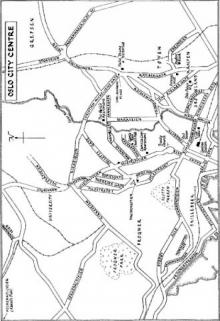 The Devil's Star
The Devil's Star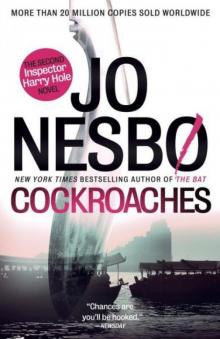 Cockroaches
Cockroaches The Magical Fruit
The Magical Fruit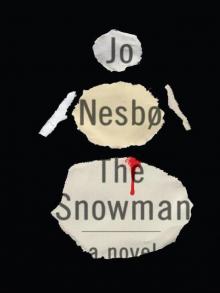 The Snowman: A Harry Hole Novel
The Snowman: A Harry Hole Novel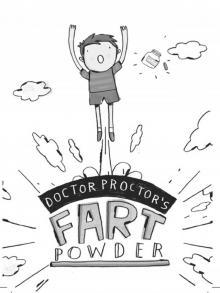 Doctor Proctor's Fart Powder
Doctor Proctor's Fart Powder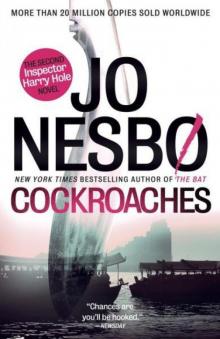 The Cockroaches
The Cockroaches Knife
Knife Phantom hh-9
Phantom hh-9 The Redbreast hh-3
The Redbreast hh-3 The Redeemer hh-6
The Redeemer hh-6 The Leopard hh-8
The Leopard hh-8 The Leopard: An Inspector Harry Hole Novel
The Leopard: An Inspector Harry Hole Novel The Great Gold Robbery
The Great Gold Robbery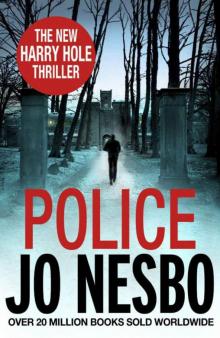 Police hh-10
Police hh-10 The End of the World. Maybe
The End of the World. Maybe The Thirst: Harry Hole 11
The Thirst: Harry Hole 11 Nemesis - Harry Hole 02
Nemesis - Harry Hole 02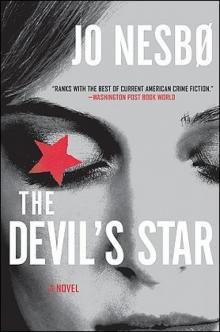 The Devil's star hh-5
The Devil's star hh-5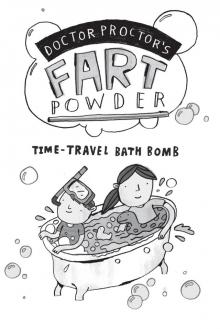 Time-Travel Bath Bomb
Time-Travel Bath Bomb